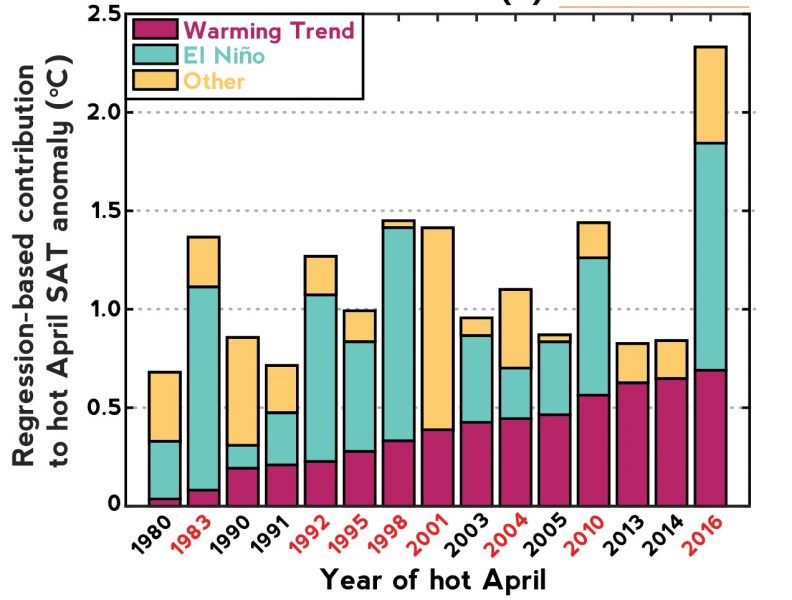Sweltering Recipe for Southeast Asia
November 20, 2017

Scientists at the University of Texas Institute for Geophysics (UTIG) have found that a devastating combination of global warming and El Niño is responsible for causing extreme temperatures in April 2016 in Southeast Asia.
The research, published in June 2017 in Nature Communications, shows that El Niño triggered the heat, causing about half of the warming, while global warming caused one-third and raised the heat into record-breaking territories. El Niño is a climate pattern that impacts the tropical Pacific, and usually brings warmer temperatures to Southeast Asia in April.
In April 2016, high temperatures in mainland Southeast Asia broke all previous records, exacerbating energy consumption, killing crops and causing human suffering in Cambodia, Thailand and other countries in the region.
The researchers used computer model simulations designed to disentangle the natural and human-made causes of the extreme heat. They also used observations from land and ocean monitoring systems and found that long-term warming has played an increasing role in rising April temperatures in Southeast Asia.
Since 1980, this trend has caused a new temperature record each April following an El Niño.
“The El Niño system primes mainland Southeast Asia for extremes, although longterm warming is undoubtedly exacerbating these hot Aprils,” said UTIG postdoctoral fellow Kaustubh Thirumalai, who led the study.
The researchers used statistical techniques to quantify the contributions from El Niño and from long-term warming. Their analysis looked at the 15 hottest April temperatures over the past 80 years. All occurred after 1980, and all but one coincided with El Niño.
They found that while the impact of El Niño fluctuated over the years, the impact of global warming has steadily increased over time. Looking at the model predictions for the next 50 years, researchers found that climate change could further amplify the effects of El Niño.
“Because of long-term warming, even a weaker El Niño than the 2015-16 event in the mid-to-late 21st century could cause bigger impacts,” said co-author Pedro DiNezio, who is a research associate at UTIG.
Other co-authors include UTIG research associate Yuko Okamuro and Clara Deser, a senior scientist at the National Center for Atmospheric Research.
Back to the Newsletter